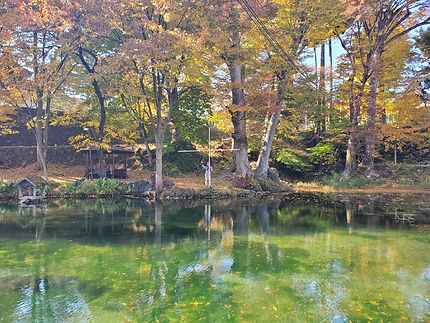
FUJI TEXTILE WEEK 2022
Art Exhibition, “Textile and Signs” 布の芸術祭– 織りと気配 vol.2 –
2022.11.23(Wed) ~ 12.11(Sun)
富士吉田市下吉田 月光寺
アーティストがテキスタイルを素材にした作品や、機屋との共同作業で作り出したユニークな作品を展示します。そこには柔らかく、風でなびく作品や、あるいは不定形の形状をえがく作品が登場するでしょう。この展示を通して「堅固な形状を半永久的に維持するはずの彫刻」という概念とは対極の、しなやかに変化し、ゆらぐ彫刻の可能性を追求します。それは柔軟に時代を生き抜く創造性の姿でしょう。テキスタイ ルとアートが織りなす新しい美の世界を作り出します。
アート展「織りと気配」ディレクター:南條史生
FUJI TEXTILE WEEK は、1000年以上続く織物の産地でもある山梨県富士吉田市の産業の歴史を根底に、伝統産業および地域活性を目的として2021年よりスタートした、テキスタイルと芸術が融合する国内唯一の布の芸術祭です。テキスタイルに光を当て、アートやデザインを通じて、テキスタイルの新たな可能性を模索し発見するイベントです。
また、産地を物づくりの起点として国内外の様々なコミュニティーと結ぶことや、使われなくなった織物関連の工場や倉庫、店舗などを展示会場として再利用することで、産業の記憶の保存と街のアイデンティティ形成に取り組んでいます。
本イベントを通して富士山麓にある織物の街、富士吉田の活性化を目指しています。
The exhibition will feature unique works created by the artists using textiles as materials and in collaboration with the fabric makers. Some works will be soft and windswept, while others will be shaped into irregular forms. Through this exhibition, the possibility of flexible, shifting, and fluctuating sculpture is explored, which is the opposite of the concept of sculpture that is supposed to maintain a solid shape semi-permanently. Flexibly survives the times as a form of creativity. Textiles and art interweave to create a new world of beauty.
Art Exhibition Director : Fumio Nanjo

《足を汚し、世界を開く》
小林万里子の作品に使われるのは、コットンや麻、和紙、粘土など、自然物を加工して作られた多種多様な素材です。そこから様々な文脈や背景が産みだされ、地域性を持った異素材の組み合わせによって、生命の営みや自然への畏怖、人間と自然の関わりといった壮大な物語が構築されていきます。
作品のイメージは、大きく広がった樹木あるいは葉脈のような形態で、多様で鮮やかな色彩に彩られています。小林自身の手仕事によって生じる強い身体性が作品の根幹を支えており、作品全体にみずみずしい生命力を宿しています。
作品は実際の場所からインスピレーションを得て制作され、自然環境やそこで生きる動植物への思慮深い洞察から始まっています。オーストラリアの山とそこで繰り返される生態系のサイクルをモチーフにした作品《熱と水》では、生物が生きるうえで重要な熱と水という対照的なふたつのエレメントについての考察が土台になっており、作品にはオーストラリアの灼熱の乾燥地帯で生きる動物たちの姿が描かれています。
今回の作品は、同じように葉脈を中心的なモチーフにしていますが、その下には、胎児のように丸く横たわる白い馬が寝ています。馬はこのエリアでは重要な動物でした。近くの小室浅間神社にはいまだに白い神馬が生きています。この作品では、原初的な生命を象徴する白馬と植物が共存し、互いに補完し合って成長する姿を、極めて立体的な刺繍とテキスタイルの積み重ねで描き上げています。
また設置された月江寺は、この地域で有名な仏教寺院です。この寺院の庭に所在する神秘的な池の向こう岸に作品を展示することで、背景となる森、木々、深い闇、そして水の反映とそこに映る作品の姿が、特別な物語を形作ります。それは自然の抱える神秘、生命の力、歴史、文化、と言ったものと深く繋がっているでしょう。
小林は織りや染め、刺繍といったテキスタイルの技法を駆使して、自然のなかで起こる「生命の循環」を表現することに力を注いでいます。
ゲストキュレーター:沓名美和
Curator’s Text
Title :《Soil Your Feet and Open the World》
Mariko KOBAYASHI uses a wide variety of materials in her work, including cotton, hemp, Japanese washi paper, and clay, all of which are made by processing natural materials. These raw materials bear a variety of contexts and backgrounds, and through the combination of different materials with regional characteristics, a grand narrative is constructed, one of life, reverence for nature, and the relationship between nature and humanity.
This work features images of large spreading trees or veins of foliage rendered in a variety of bright colors. The intense physicality generated by Kobayashi's handiwork underpins her works and gives them a sense of vitality.
The work on display here is inspired by actual places and begins with thoughtful insights into the natural environment and the flora and fauna that live there. Her work Heat and Water, inspired by the Australian mountains and their ecological cycles, is based on an examination of the contrasting, titular elements, both of which are critical to the survival of life. The work features drawings of animals who live in the sweltering Australian outback.
This work shares the same central motif of leaf veins, but beneath them lies a white horse curled up in the fetal position. Horses were once an important animal in this area, and a sacred white horse still lives nearby at Omuro Sengen Shrine. Here the white horse, symbolizing early life, coexists with flora, and they complement each other as they grow, depicted through pronounced three-dimensional layers of embroidery and textile.
The work is installed at Gekko-ji Temple, a well-known Buddhist temple in the area, and displayed on the far side of a mystical garden pond. An extraordinary story unfolds as the work reflects on the surface of the water surrounded by the forest, trees, and deep darkness of the temple, making deep connections to the mystery of nature and the power of life, history, and culture.
Kobayashi focuses on expressing the cycle of life that occurs in nature through textile techniques, including weaving, dyeing, and embroidery.
Guest Curator:Miwa Kutsuna | Cooperation:Miyashita Orimono, Wataaki Orimon




